Leica Q Review: Thoughts and Sample Images
By @alexcornell // 09.08.15
I brought the Leica Q with me on a recent trip to Barcelona and Mallorca. I usually travel with a backpack full of Canon gear; this time I wanted to try a more casual approach.
The plan was to bring a capable camera I could carry everywhere–something that would take incredible pictures, but wouldn’t drastically affect my experience.
The small and mighty Leica Q got the nod.
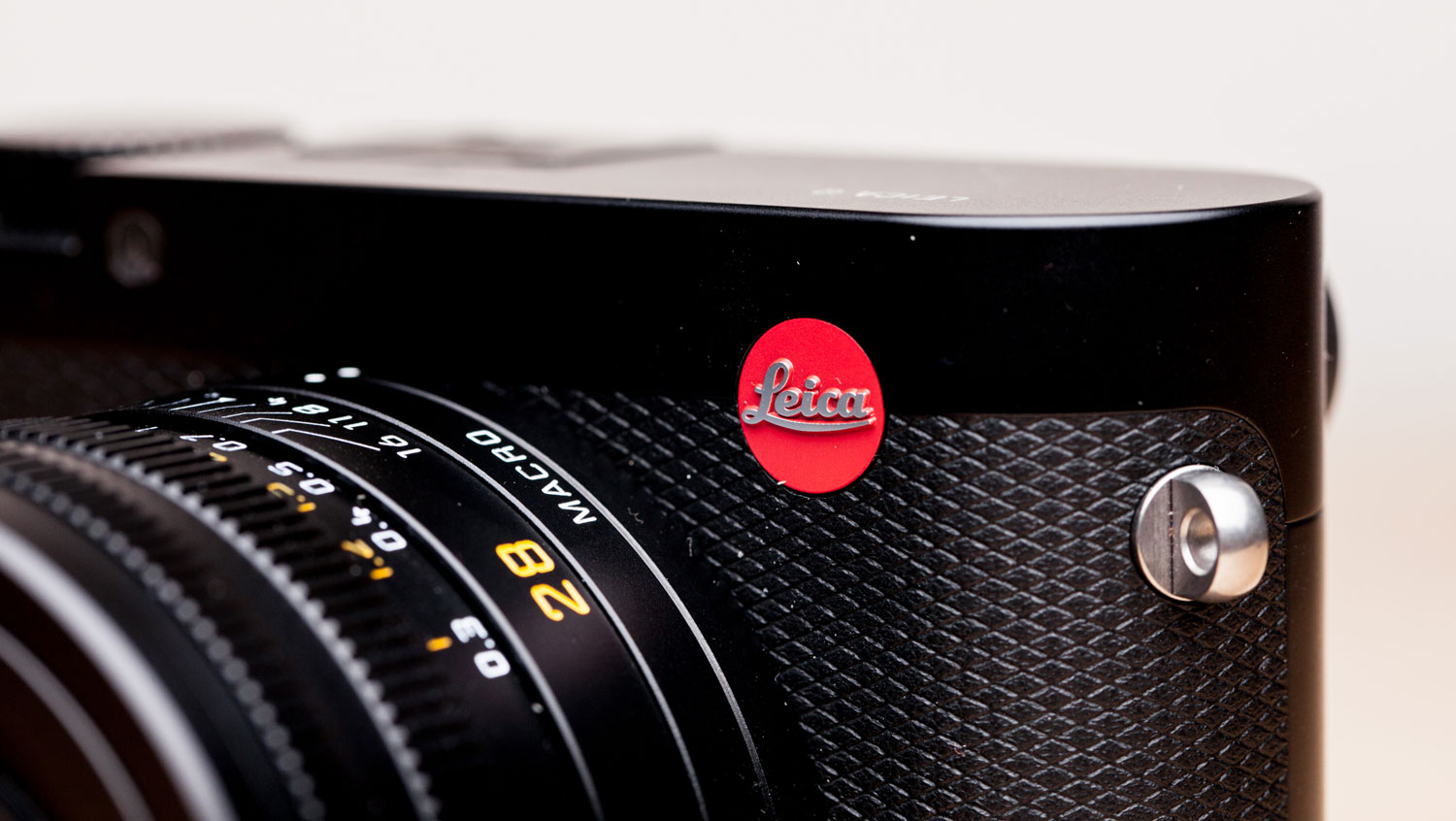
The first and most important question with a new camera is: do you like it? Answering yes to this simple question is the prerequisite to the overused (yet entirely valid) qualification, “the best camera is the one you have with you”. And not all cameras are easy to like.
After a week with the Leica Q, I can answer absolutely yes, I really love this camera.
The Leica Q experience is lot like what I imagine using the iPhone 8 camera will feel like. It’s incredibly simple, produces an amazing image, and requires no premeditation in the way of settings or gear.
Like the iPhone you don’t even consider you have a camera with you until you need to take a picture.
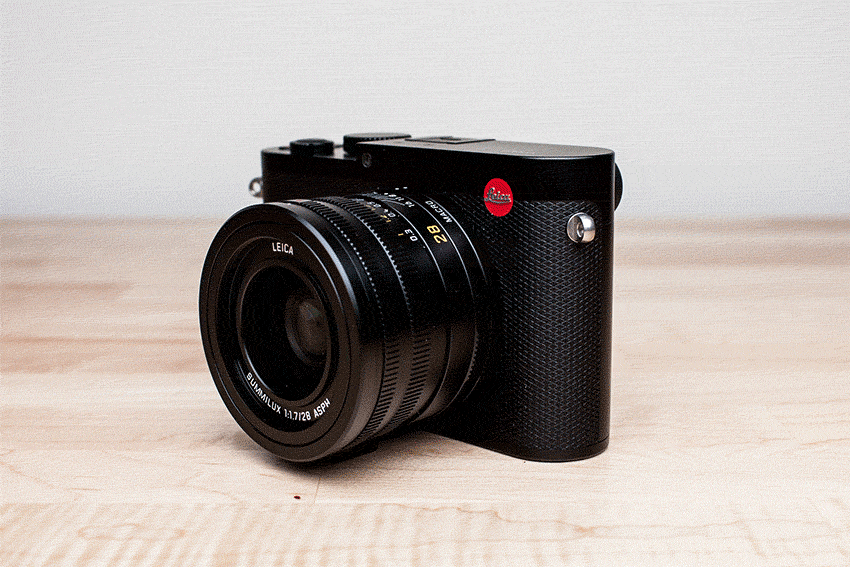
Here I think is the key to the success of the Leica Q: it’s not trying to replicate the DSLR experience. It’s a true companion camera—limited in performance, yes, but extremely well-suited for high-fidelity memory gathering on the go.
I still have, and plan to use, an abundance of Canon gear. There is still a time when it’s necessary and awesome to bring a rig out there. Where the Q succeeds are those trips or moments when a rig is impractical–when you want to capture great images but basically not think about it at all.
If a Canon DSLR is a tank, then the Q is a little scout that runs ahead on foot. Both are useful, in their own way.
If a Canon DSLR is a tank, then the Q is a little scout that runs ahead on foot. Both are useful, in their own way.
This is where I think the Leica Q/Sony A7 comparisons are off the mark; with the A7 line, Sony is trying to eclipse the conventional DSLR feature set, but with smaller bodies, pixel mic-dropping, astromnomcial (but c’mon, largely impractical) ISO numbers, and a growing lens lineup.
The Q isn’t interested in this fight. It won’t replace your DSLR, but it’s not meant to. It serves a different master.
I’d love to delve further into the specs and tech details of this camera; I’m just not the right person for this job. You can find plenty of that elsewhere online. Honestly these days, the numbers all blend together anyway.
Instead I’ll show you pictures from the trip with some additional commentary on where I think the camera performed well (or poorly). Let me know if you like this format on Twitter.
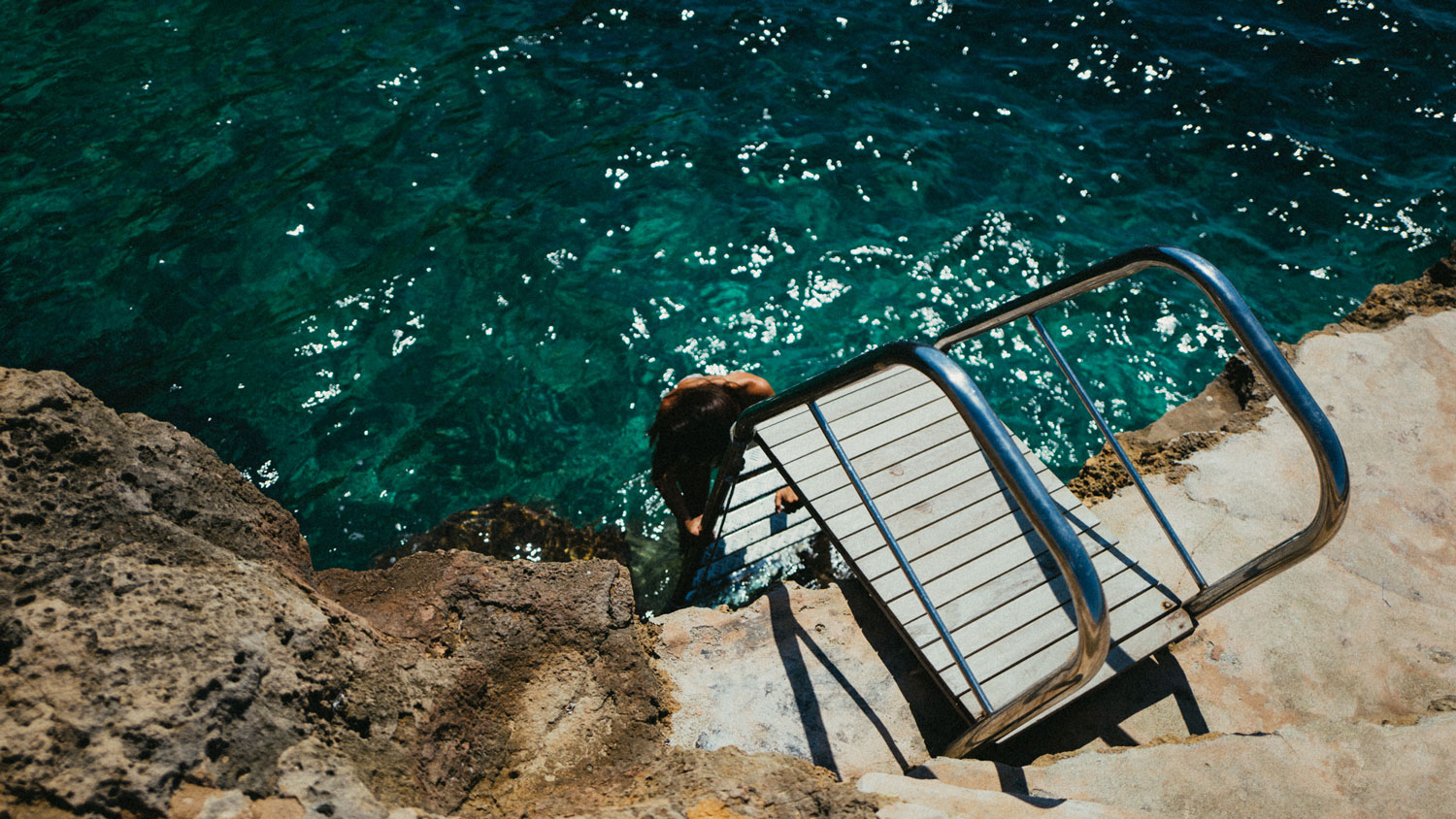
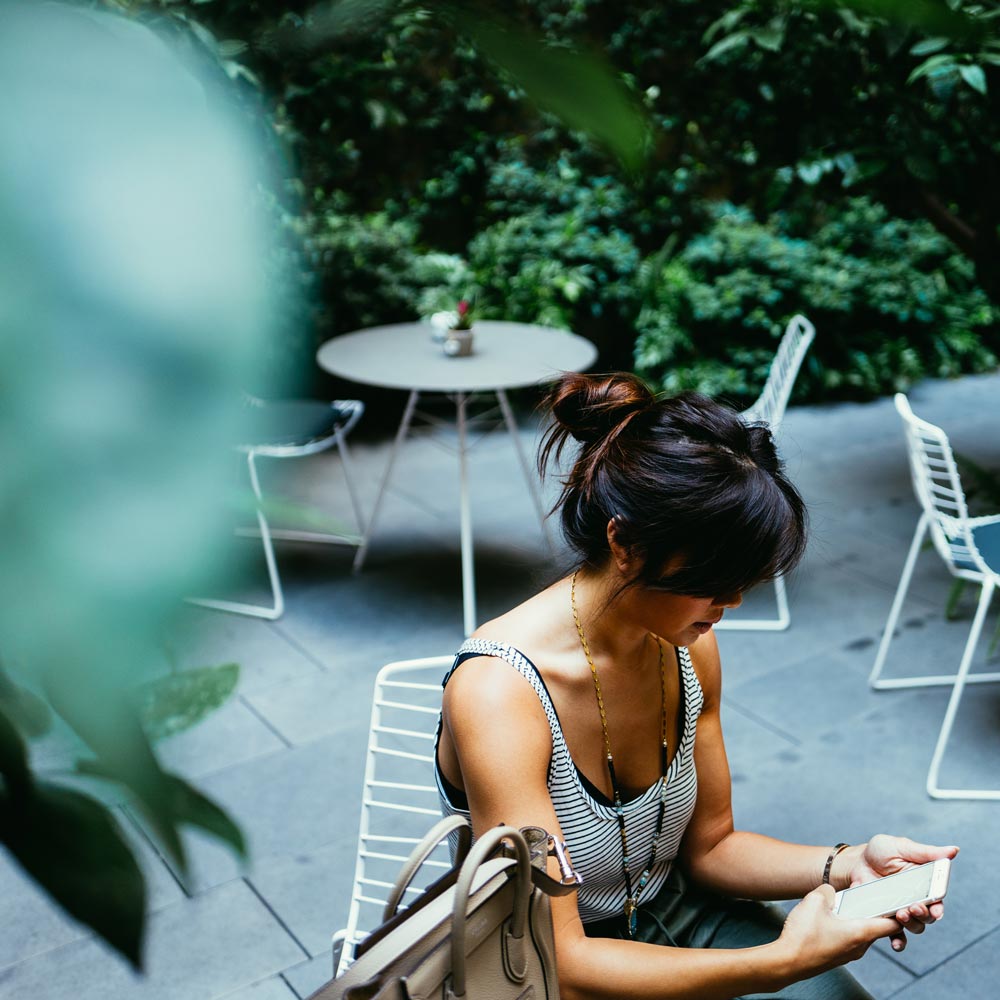

My favorite thing about the Leica is its tonal output. The pictures above show some good variety here. For example, look at the water in the first picture. It’s tasty green jello. You want to eat it. I’m not pulling that out in Lightroom; Leica has delivered it to me in a lovely package.
The second shot was taken in this beautiful courtyard of the Mercer Hotel Barcelona. I love the way the skin tones pop against the deep greens of the ivy wall. And that’s some pretty bokeh—normally I’d reach for my 35mm 1.4 to get a shot like that.
The Palma street shot looks more like a painting than a photo. This was something I found myself saying over and over again. Honestly I don’t know what it is about the images that achieve this painterly quality–it sits in this weird, mushy, subjective place, beyond my ability to articulate.
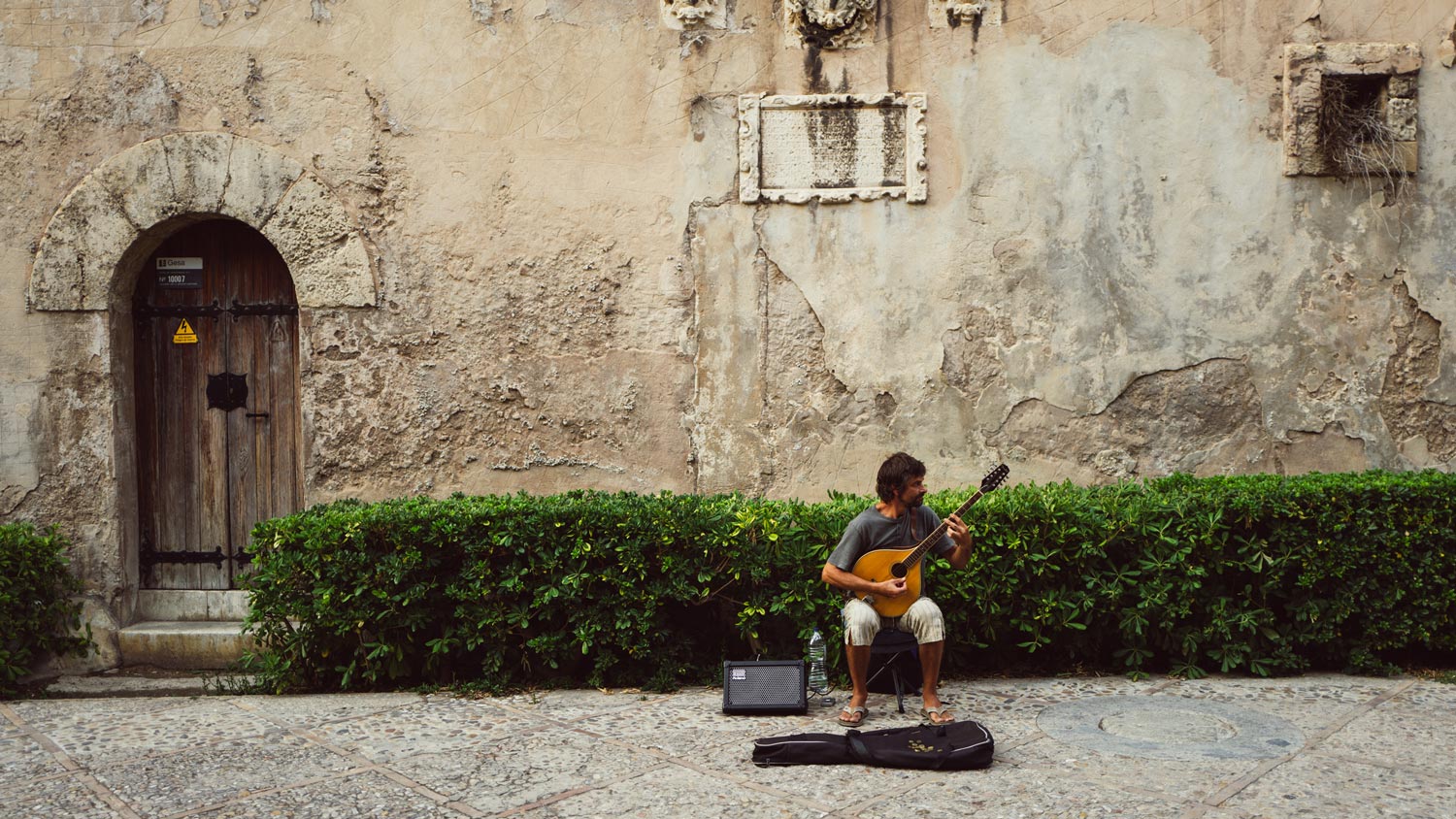
This shot exemplifies why 28mm was a good choice for Leica. It’s wide enough that you can capture the fullness of a scene without distortion; that extra little bit of width over 35mm makes it that much more versatile (which is important when it’s fixed, and your only option).
A fixed lens takes getting used to, but after you’ve practiced a bunch, it streamlines your process—you have one less thing to consider when prepping an image.
In this second shot of Sagrada Familia, you might notice a little bit of grain on the image. This wasn’t added in post—it’s noise from a high ISO setting, which normally I would try and avoid, but I think it looks pretty cool in this case. I wouldn’t dare say “film-like”, but it certainly didn’t ruin the image.
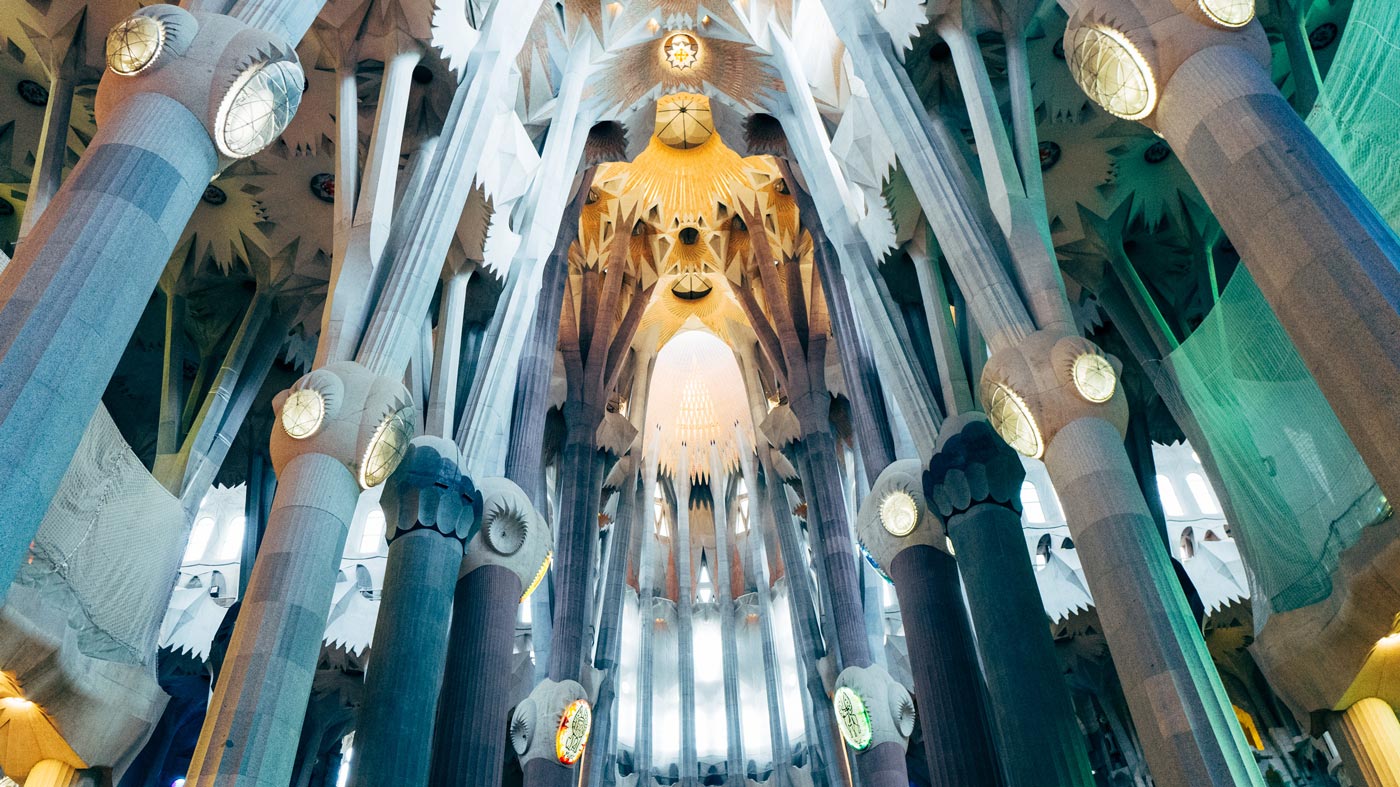
The Leica Q has a video mode, but it’s nowhere near good enough to be useful. I tried it a few times and was pretty disappointed. Not a big deal—I bring the 1DC when I need photo+video—but it would have been nice to have.
The main issues are the frame rate options (60/30, no 24) and really gnarly in-camera sharpening. You can mitigate the sharpening in settings, but the overall look is very ‘video’ no matter what.
I also made the mistake of leaving autofocus on while shooting video. Usually this wouldn’t be terrible, but the Leica would wobble in and out of focus rapidly–so fast that I couldn’t see it on the viewfinder, and only later realized the shots were all basically ruined.


The video mode did however help me make these fun gif loops. For the sake of file size, I’m just looping like three frames here to give it a little motion. It looks way better with 30 frames but the file size is too intense.
If you’re interested, these are made using about 1 second of video, importing into Photoshop (video file as layers), using the Timeline tool to cut and loop three frames, and then exporting as gif.
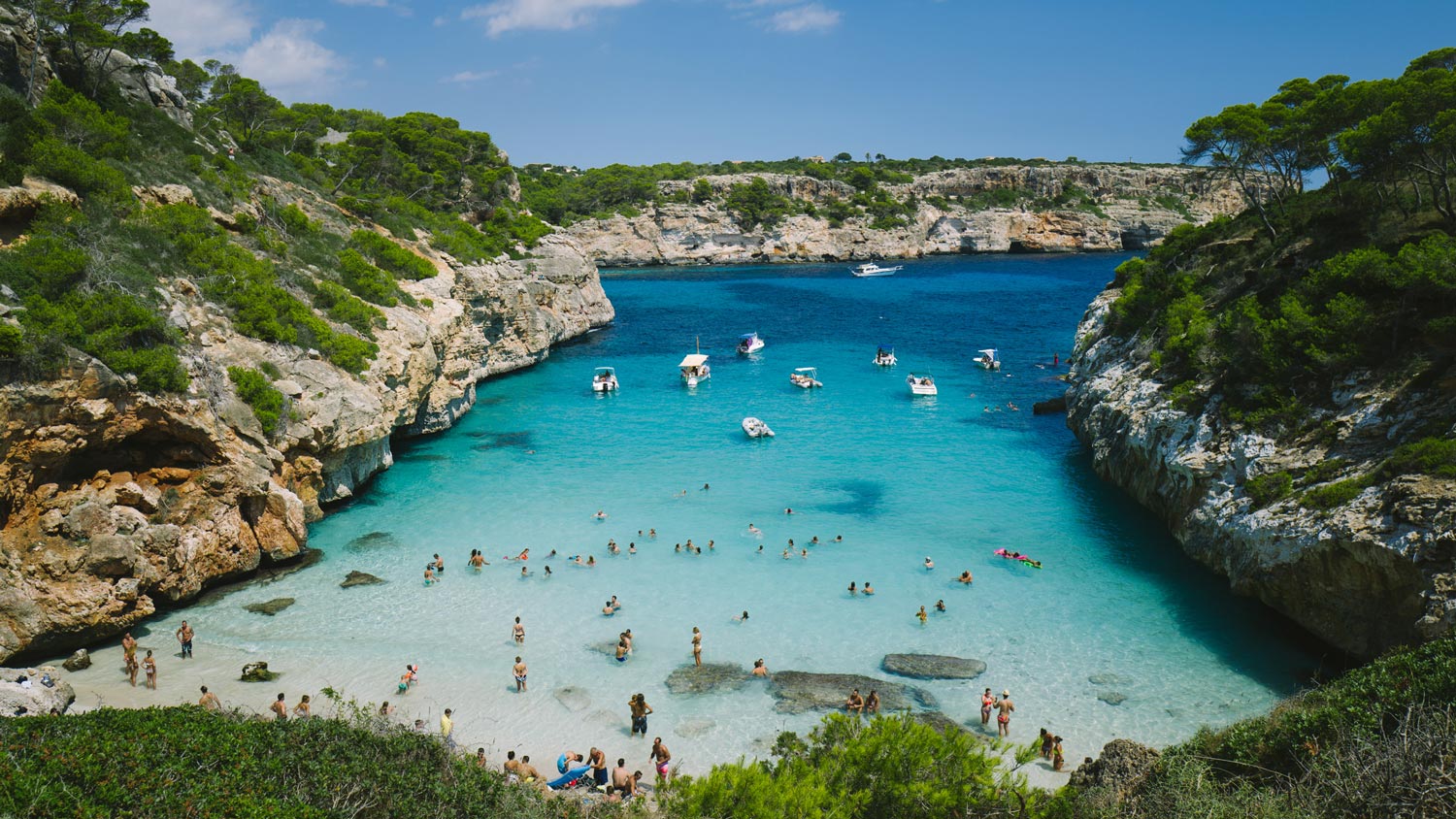
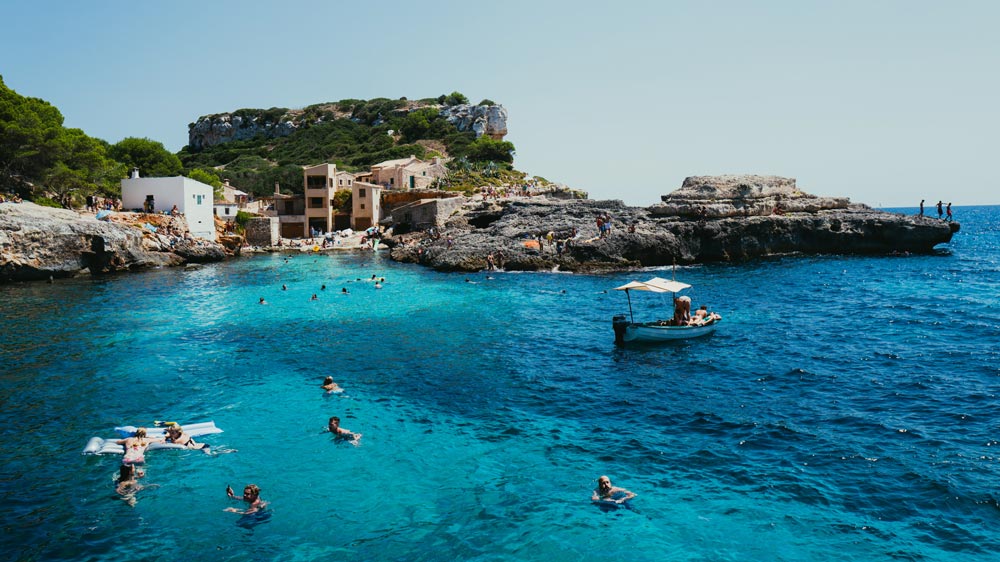
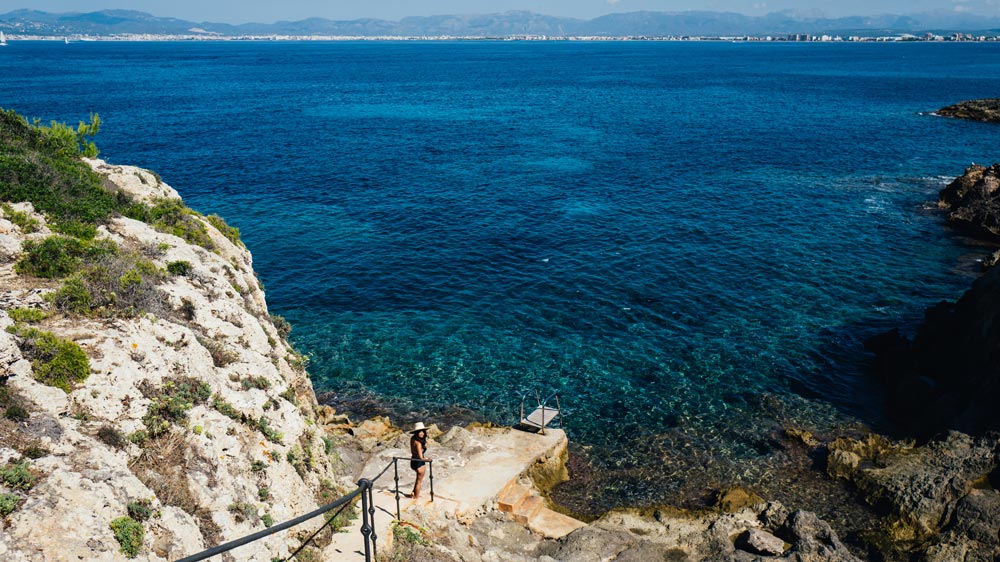
You take a lot of pictures of the water in Mallorca. My favorite is the first one above from Callo Des Moro, an absolutely insane beach on the east side of the island. Super crowded though–it looks beautiful from above, but it was shoulder-to-shoulder down below.
The staircase to the water was at Cap Rocat. This was one of the few times I wished I had my Canon rig. While this shot is cool, I would have preferred a nice 200mm zoom to get a tighter frame on the ladder into the ocean. The compression would have been awesome.
It didn’t happen often, but I’d say there were probably five instances where I would have preferred a zoom lens. The rest of the time, the odd-duck 28mm worked great.
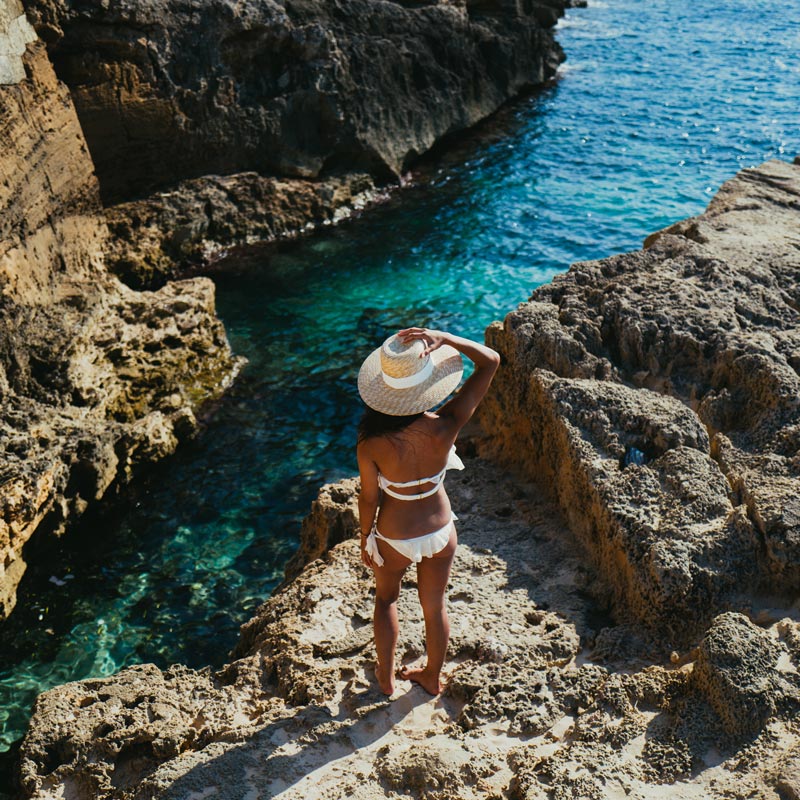
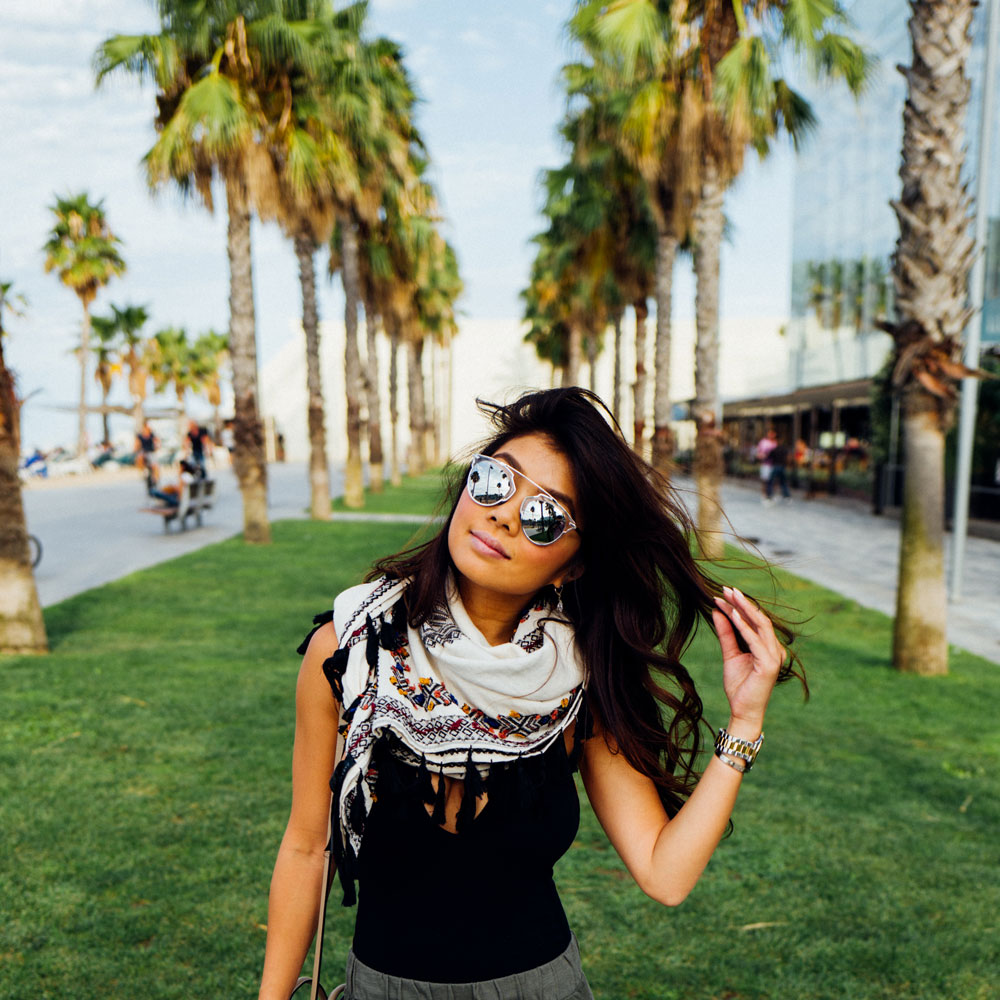
On the left is a small cove at the Cap Rocat hotel in Mallorca. This shot was edited pretty heavily with Lightroom; it took a long time to settle on a look for this photo, largely because the DNG output is so flexible. Not unique to the Leica but it’s nice to know you’ve got the power if you need it.
On the right is a shot on the coast in Barcelona. If you have any concerns about the Leica’s ability to charge forth on the bokeh front, fear not. Even in full sunlight the f1.7 generates a beautiful blurred background when you want it.
It’s especially fun to have aperture as a hardware toggle on the lens. Even if we’re all just Instagram jamming, it’s fun to feel like a real photographer spinning lens rings.
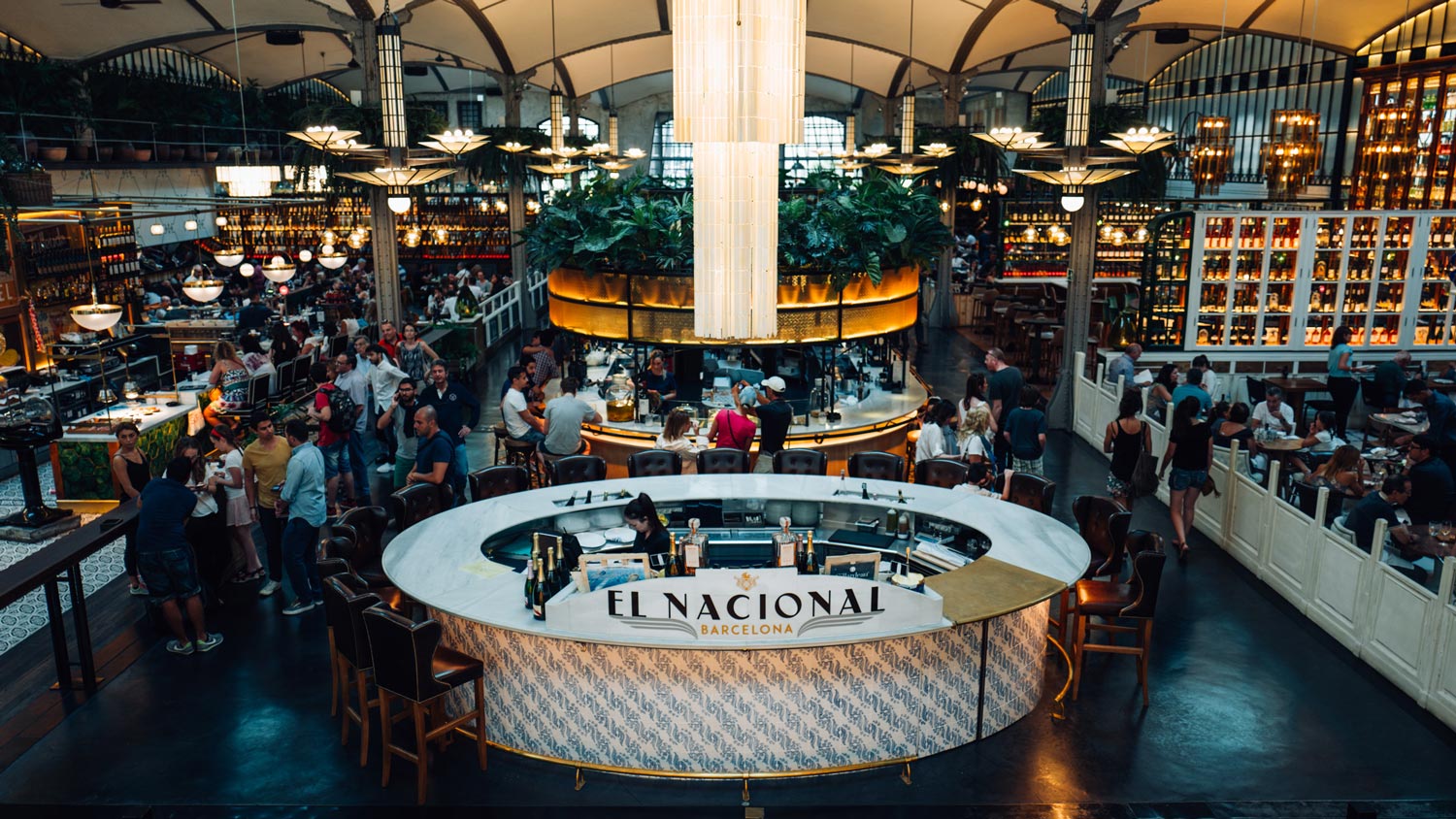
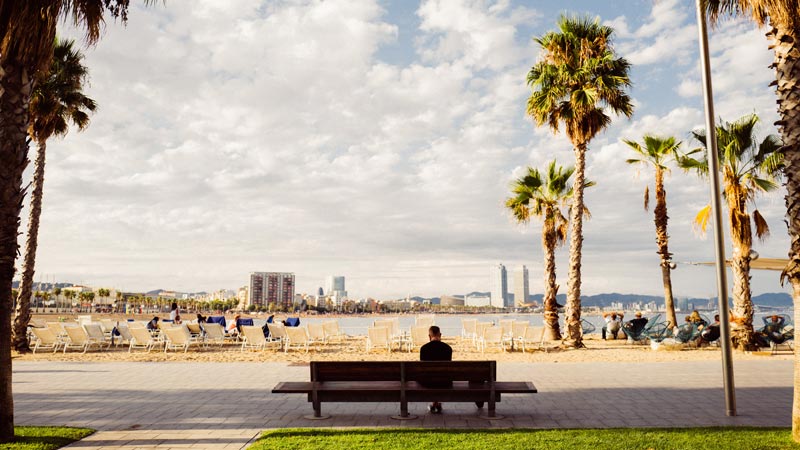
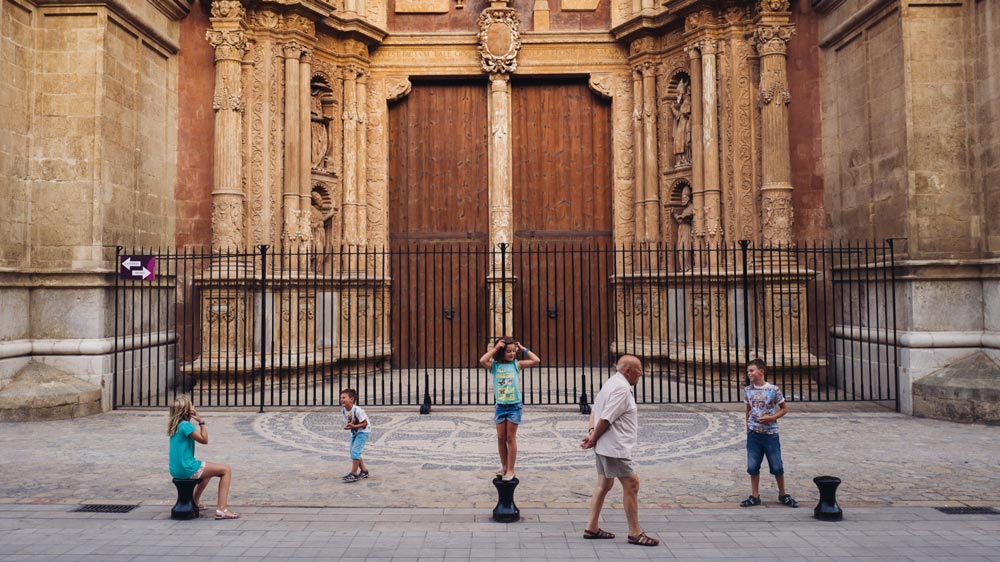
These are some more examples of the focal length working really well for the scene. 28mm really was very unusual for me; I’m used to either 14-16mm for a wide lens, or 35-50mm for midrange. The fixed 28mm on the Leica had me moving around a lot more. Overall I think it resulted in much more considered compositions, as I spent that additional time thoughtfully getting into position.
I do feel like, when looking at my vacation shots in aggregate, that I basically have two types of pictures: wide “scene” shots, and really close up “thing on table in focus, blurry background” shots. Not bad, just less compositional variety than when I roll with the Canon family.
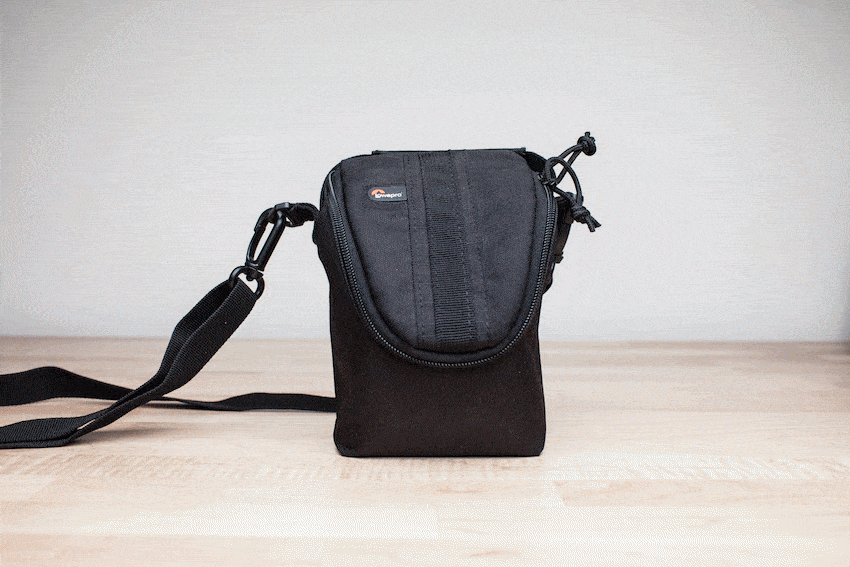
A camera fits in your pocket or it doesn’t. The Leica isn’t a pocket camera but it can be very low profile if you want. No lenses, filters, or extra batteries. The Leica battery lasted me a full day (and some) every time we went out.
I really like the Lowepro Adventure Ultra 100 shown above. It fits the camera and only the camera. You can maybe slide a credit card in there as well, but it’s a really snug fit. This is great bag for the Q if you don’t need to carry anything else. It was great for walking around Barcelona.
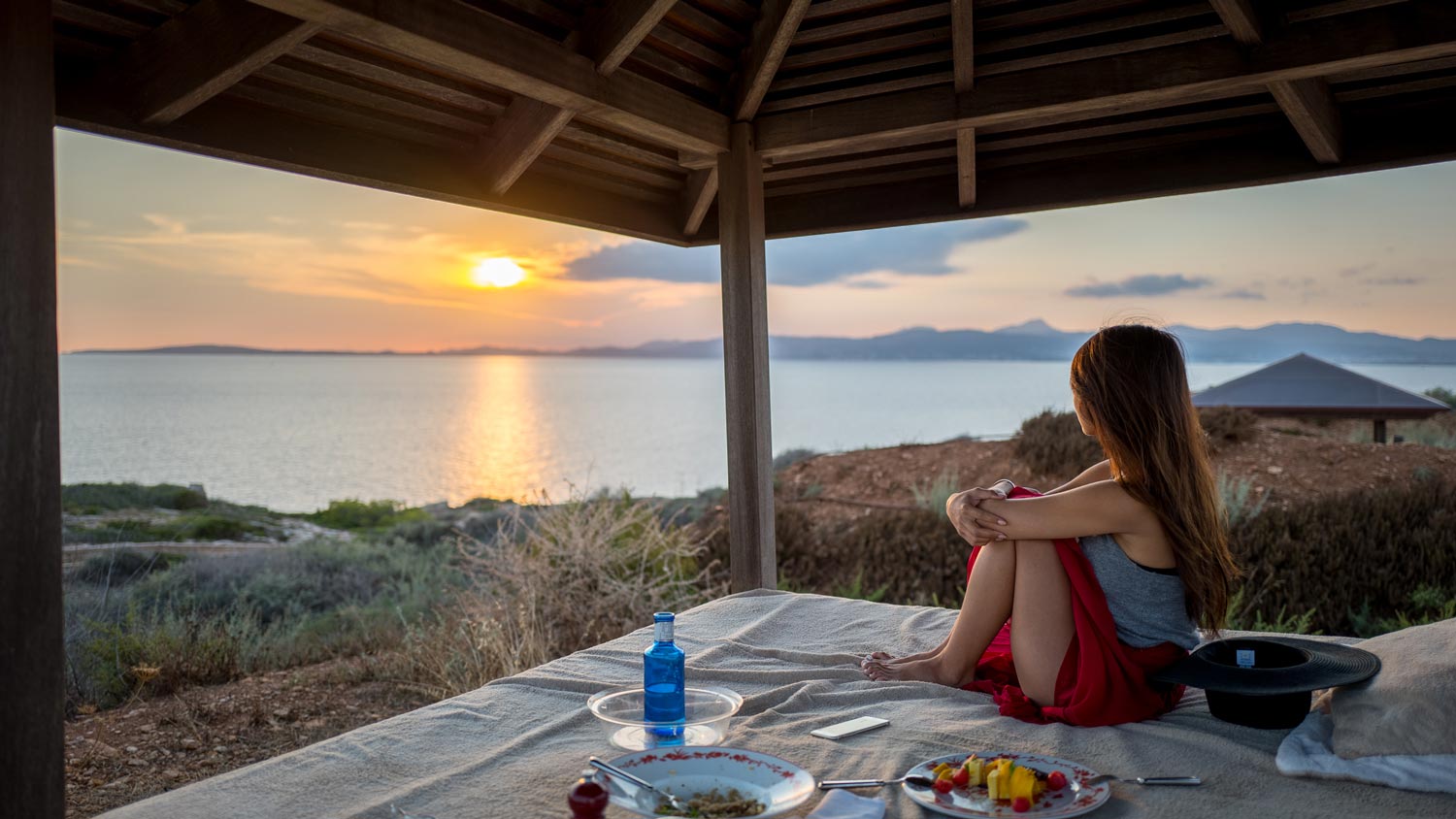
As expected, the Q offers exposure bracketing, easily found in the menu. First let me say: the menu for the Q is an absolute dream. This is important! It feels like a camera that wants you to enjoy it (as opposed to many others, which actively try and repel you with horrid UI and confusing menu trees).
The exposure bracketing works great, especially when paired with Lightroom’s new (I think) HDR tool. The shot above was taken hastily, using three exposures, and combined in Lightroom with no additional tweaking. Usually I use Photomatix or HDRSoft, but this was a lot faster (albeit with a lot less control).
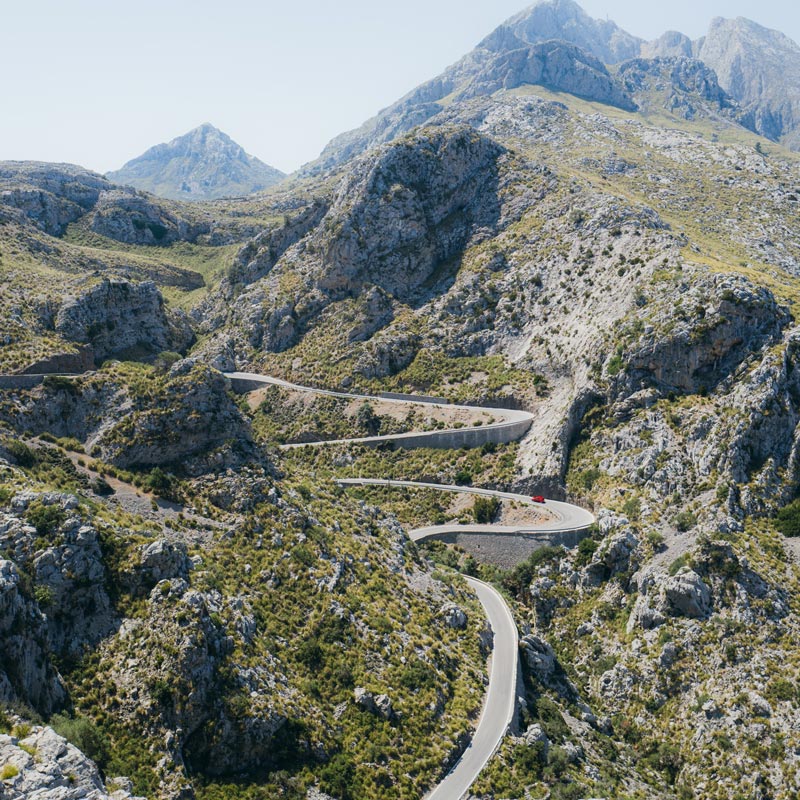
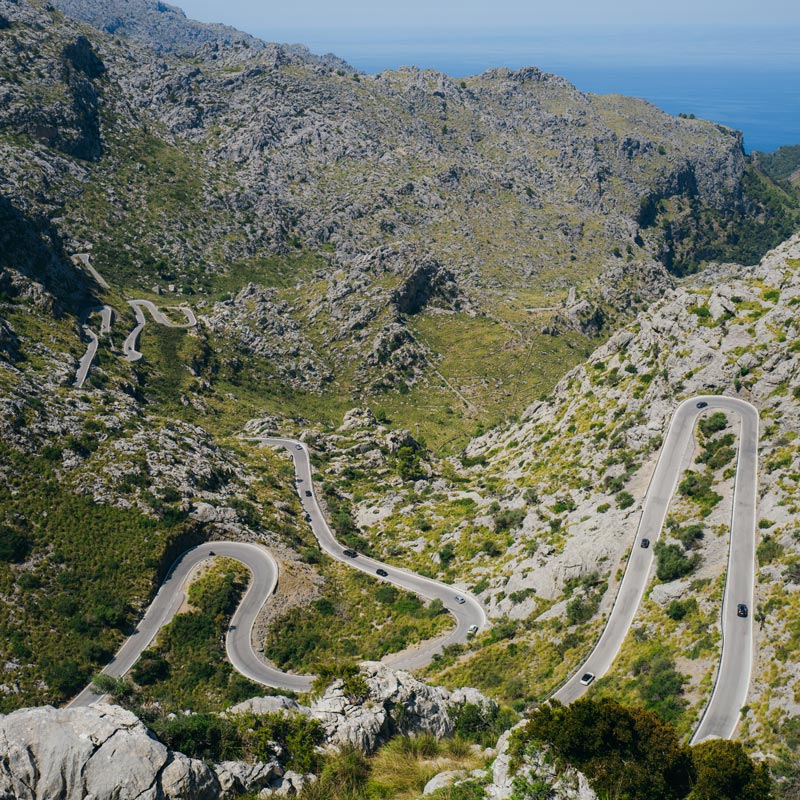
Vast landscape photography is where you feel the Q’s limits. It’s not bad, don’t get me wrong, but with 28mm you really only have one shot to take from a given vantage point. That one shot will be awesome…but it will be your only perspective.
Take the above example. This was an incredible road we found on the west coast of Mallorca. From the top of the mountain you could see the road unspooling below for miles; the problem was, all of the pictures look exactly the same. From that angle is was impossible to get any variety out of the Q, without adding additional subjects or moving around a ton.
Again, not terrible if you plan ahead. Just worth noting if you’re used to getting comprehensive coverage of a scene using different zoom crops. Also the grass on the above photos looks really choppy to me. Not sure why, just not feeling it.
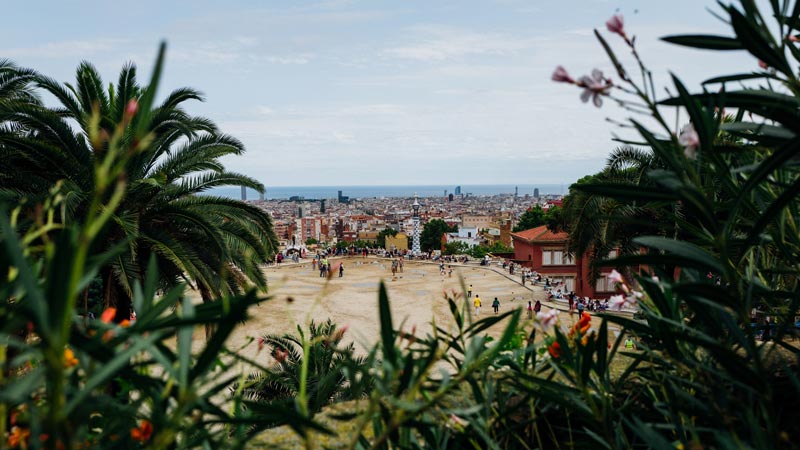
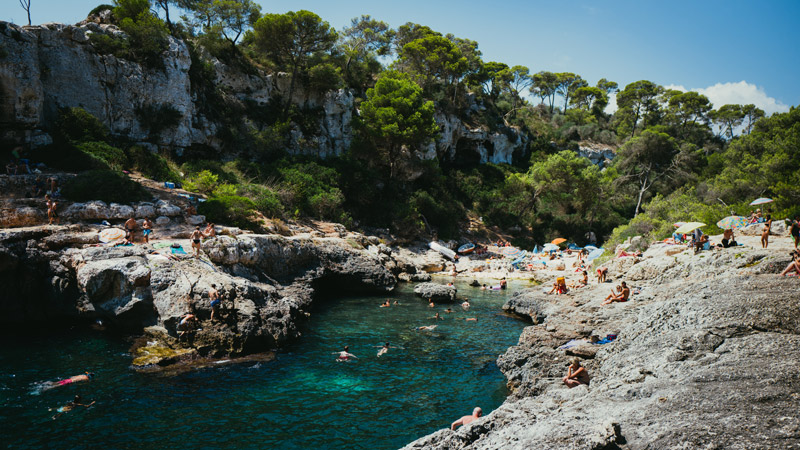
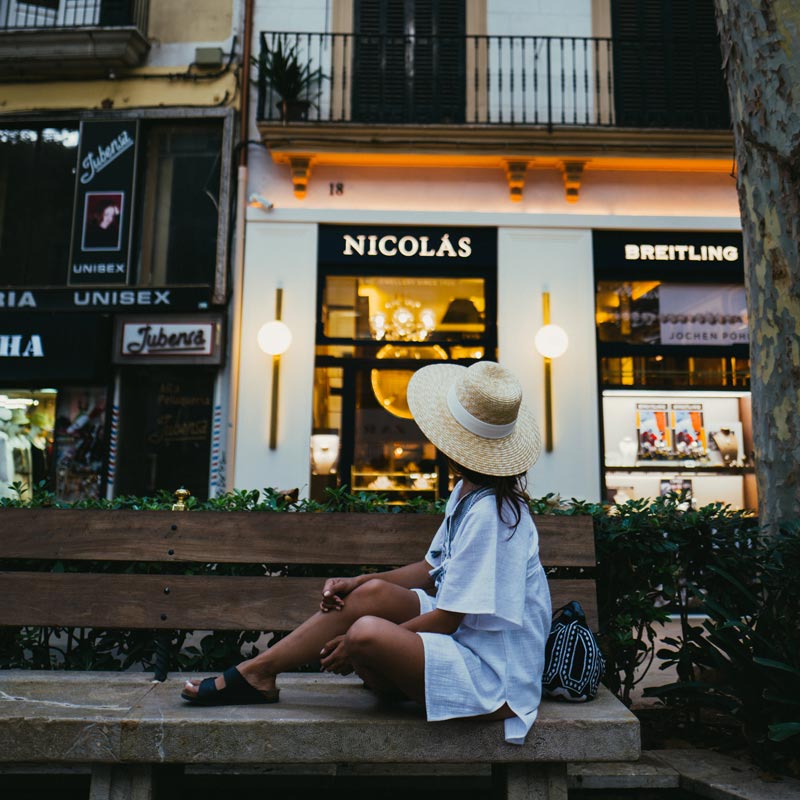
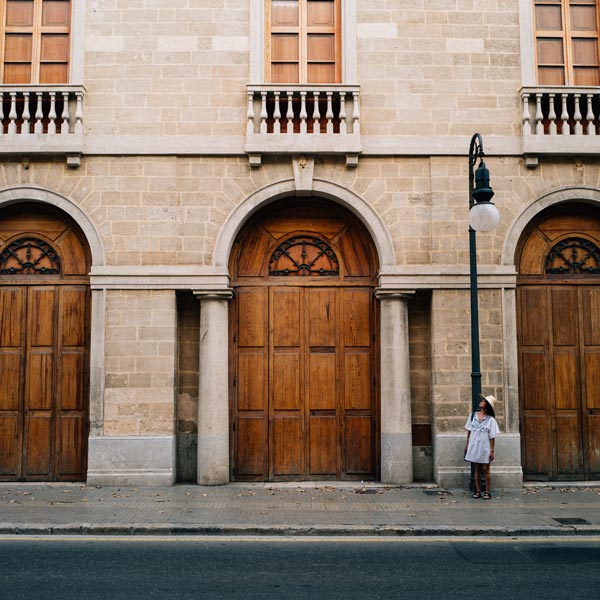
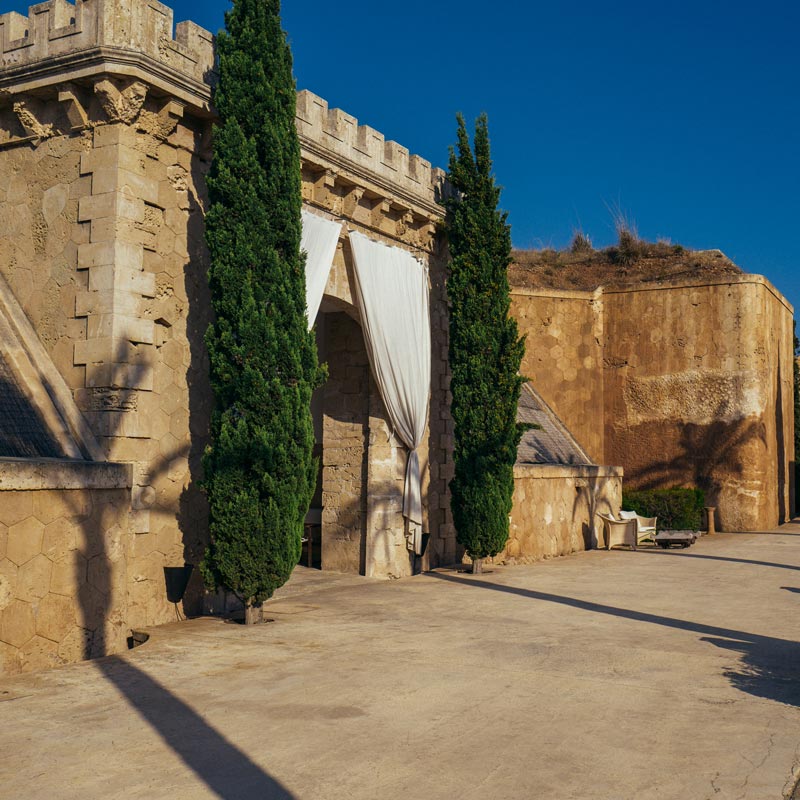
It’s helpful to consider why you take pictures in the first place. Are you mostly making memories? Posting to Instagram? Selling prints? A journalist? Conjuring FB fomo? A professional? There are many reasons people take pictures but I’m not sure everyone really thinks about why anymore.
Just point your iPad, tap tap tap, and be on your way.
So when considering a camera, it’s useful to think about what you hope to get from that camera, and what your alternatives are. If you’re just grabbing memories, the iPhone continues to prove itself more than capable. If you’re a pro selling prints, you already know you’re committed to a bag full of gear.
The Leica Q doesn’t fit in at either extreme. But if there’s a line in the sand, with “professional” written on it, the Leica sits happily behind that line. While its cost may argue otherwise, the Q is not competing with fully-equipped professional rigs.
It’s a casual shooter with surprisingly professional output.
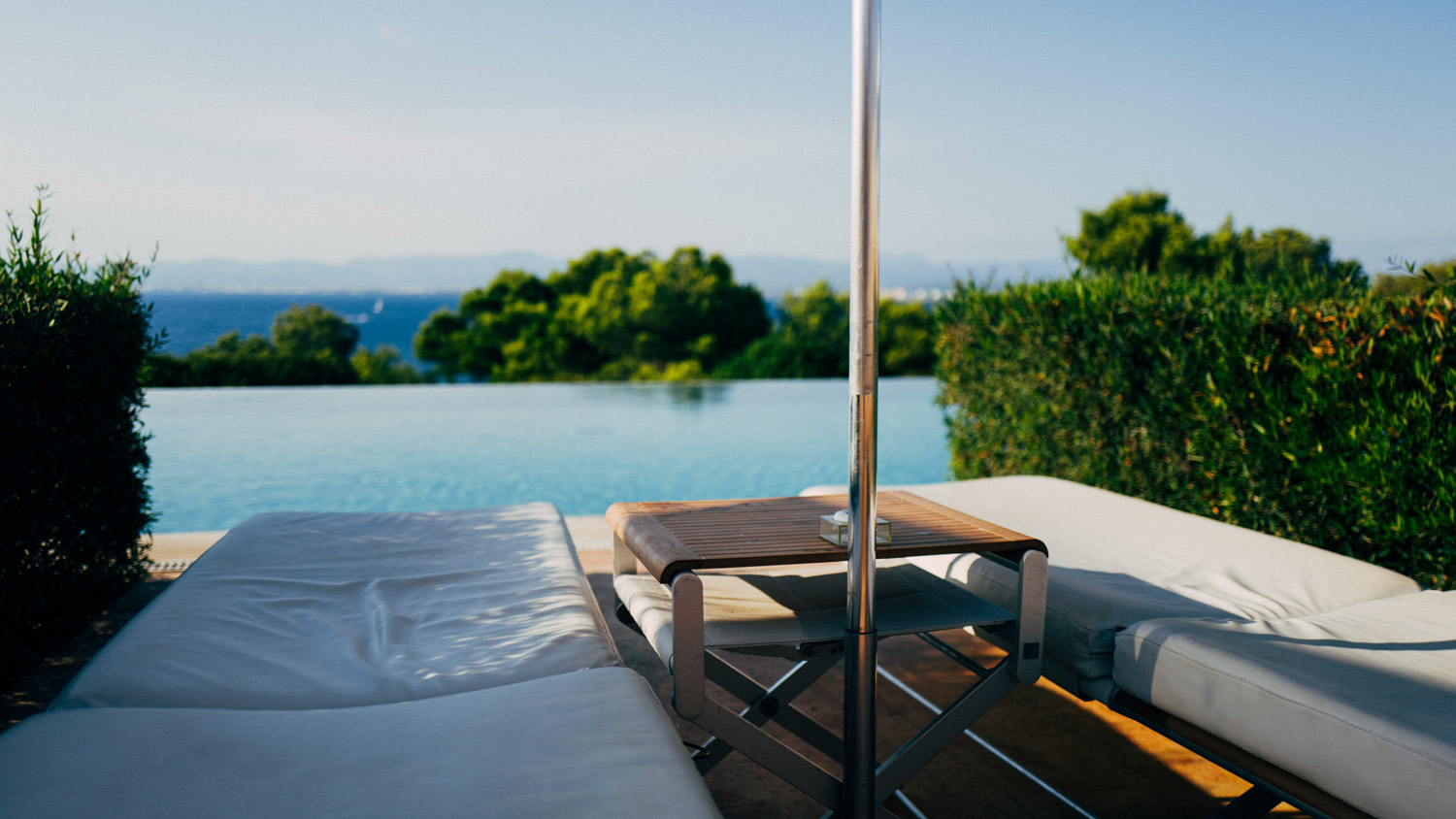
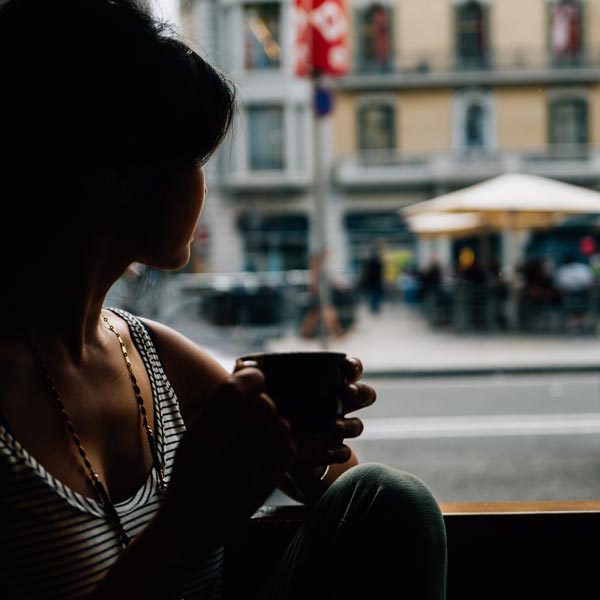
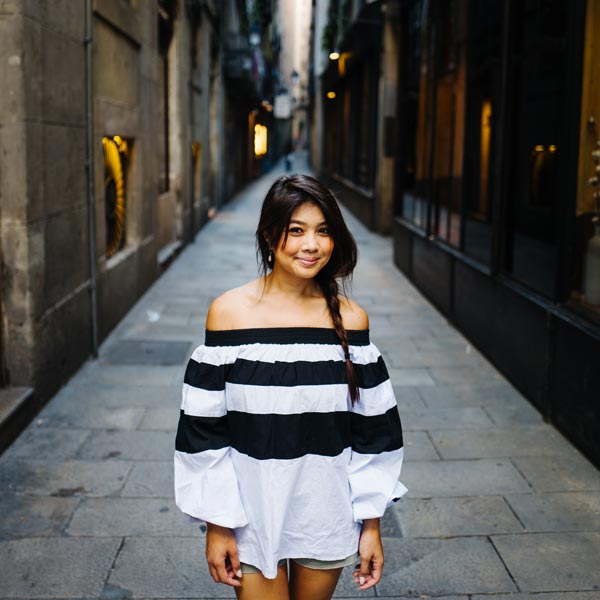
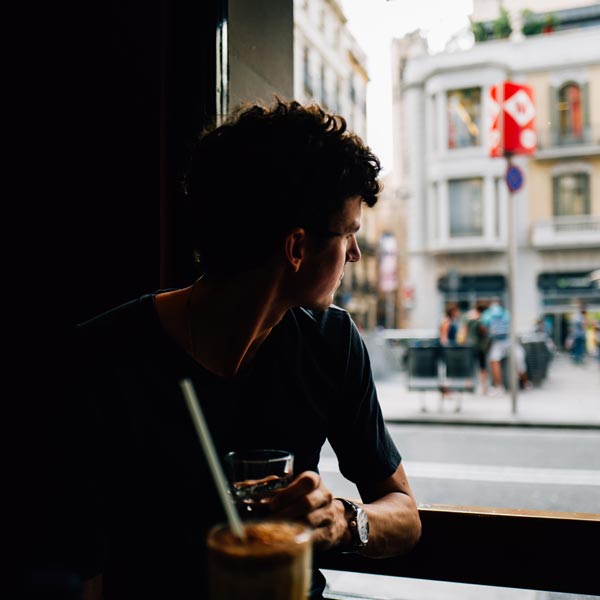
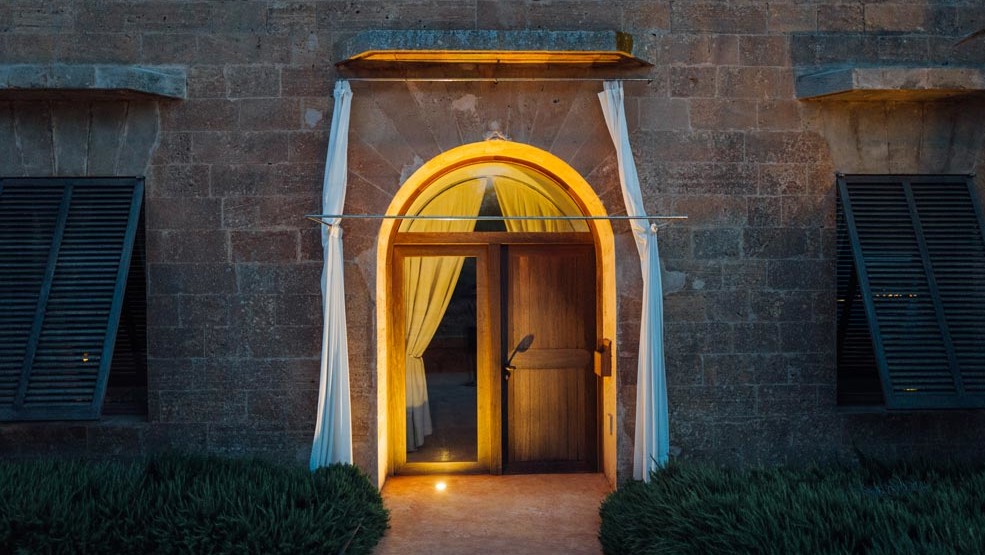
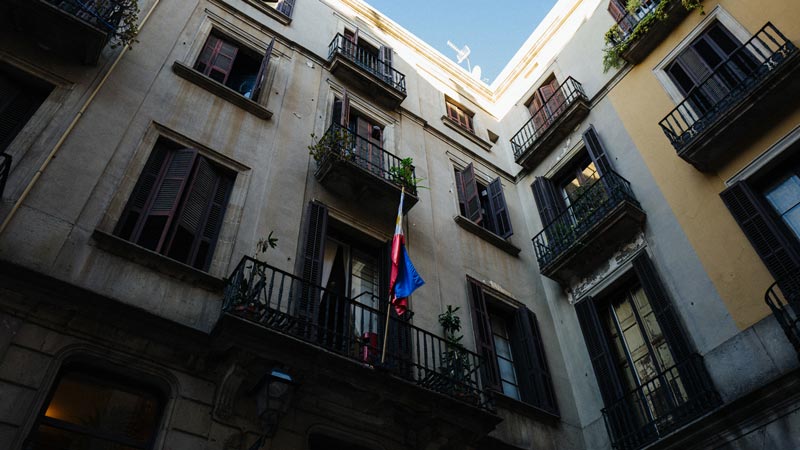
The rest of these images are included so you can see some more examples. Nothing too crazy here.
In one of the shots below, you’ll see some ghost-like people blurring. Quickly toggling shutter speed up to 1-2 seconds made for some fun results. This, like aperture, is controlled with a hardware knob. Harkens back to a more manual approach — it’s like driving stick shift, but on a camera.
I did experiment periodically with the various built-in style modes. For example, there is a pretty interesting panoramic mode, which works sort of like you’d expect it to, but is tricky to get right. The pano a few shots below was stitched together in Lightroom instead, since I couldn’t get it right in camera.
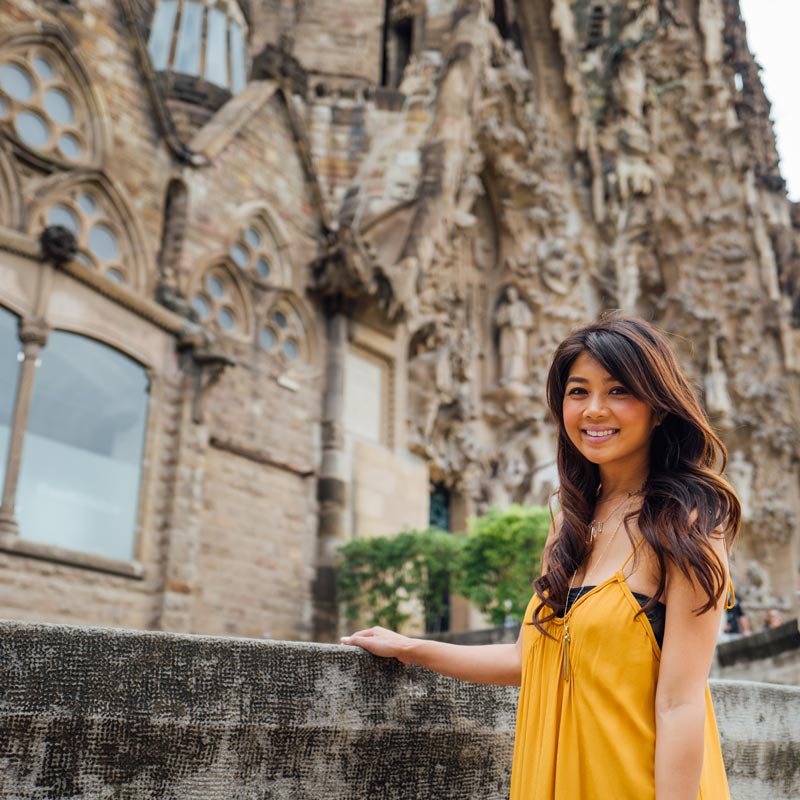
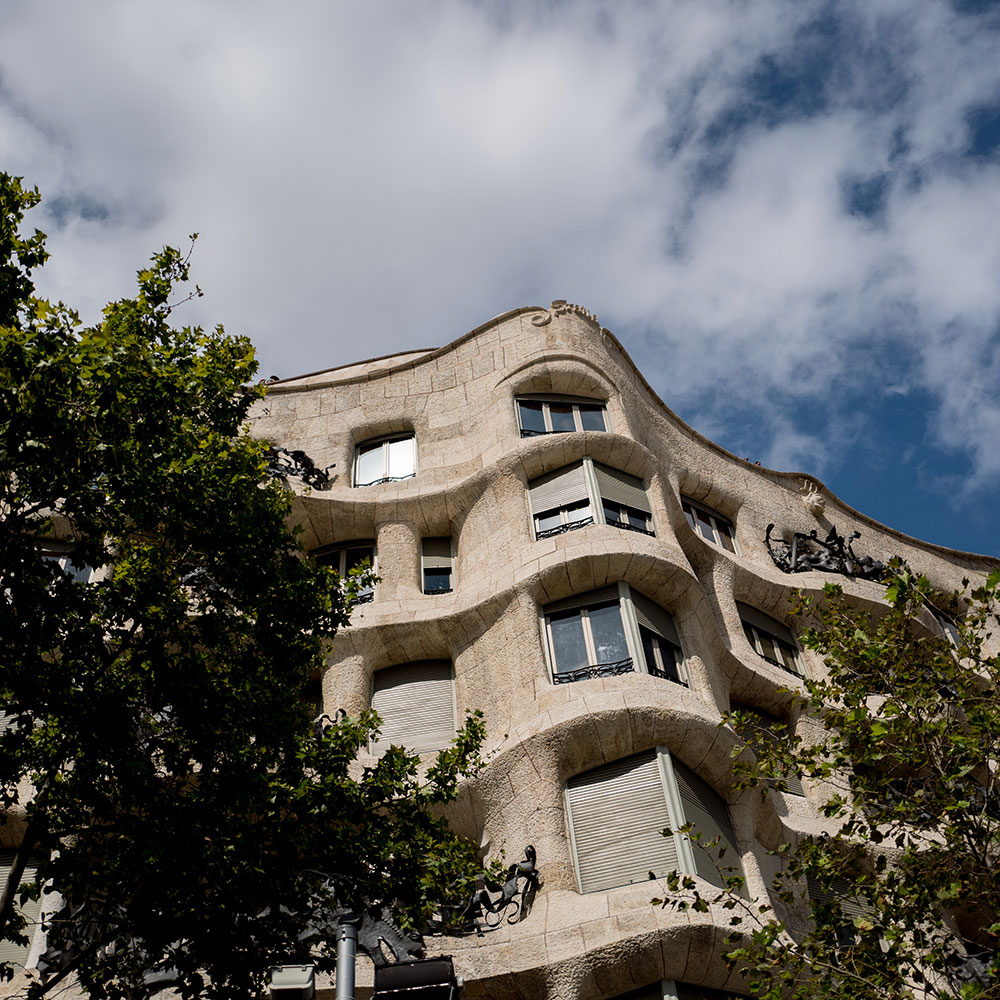
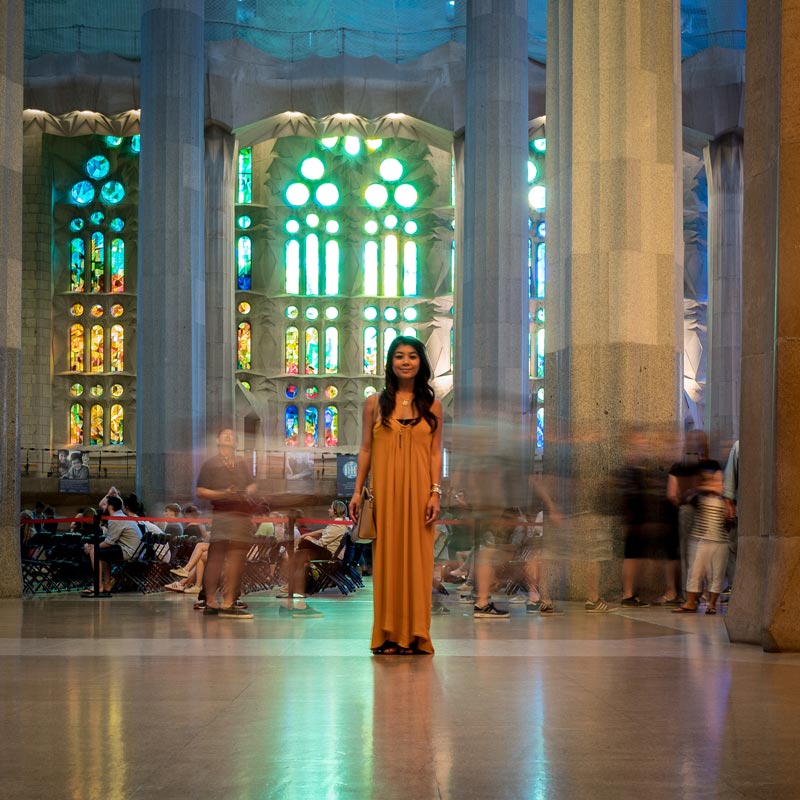
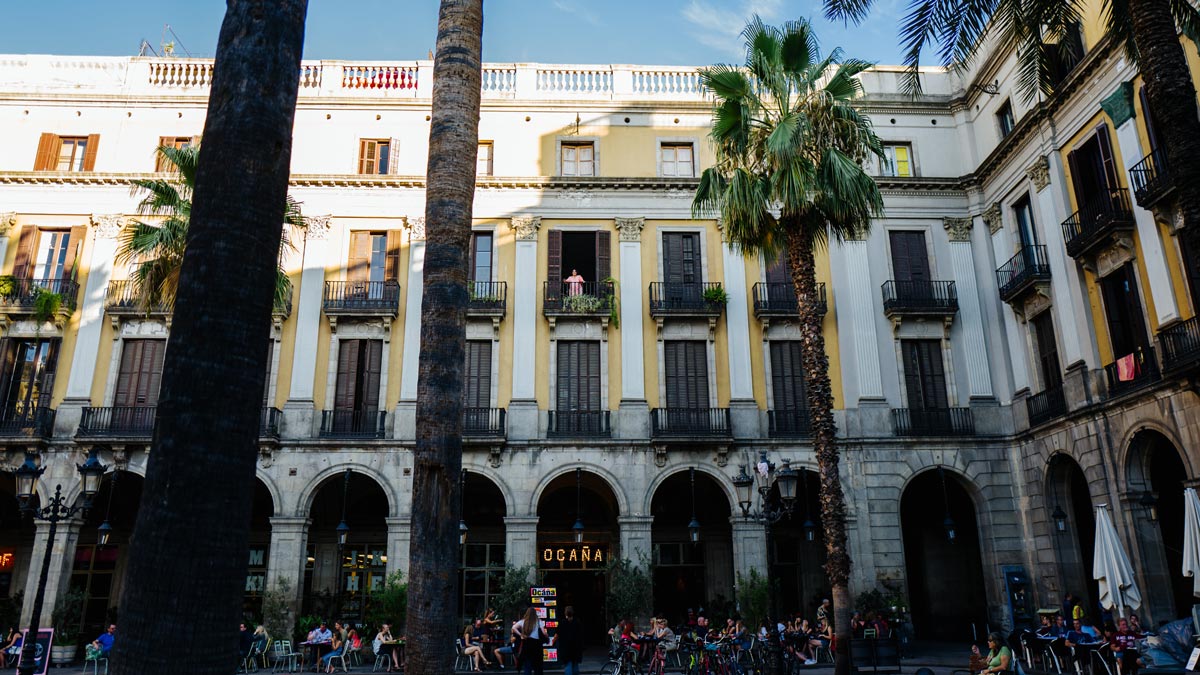

Thanks for checking out this overview. Hopefully it was helpful if you’re considering adding the Leica to your arsenal. I do highly recommend it. If it doesn’t come through in this review, using the Leica is an absolute joy. Something I really haven’t experienced with many other cameras.
For more completely random, yet interesting, articles, follow me on Twitter.